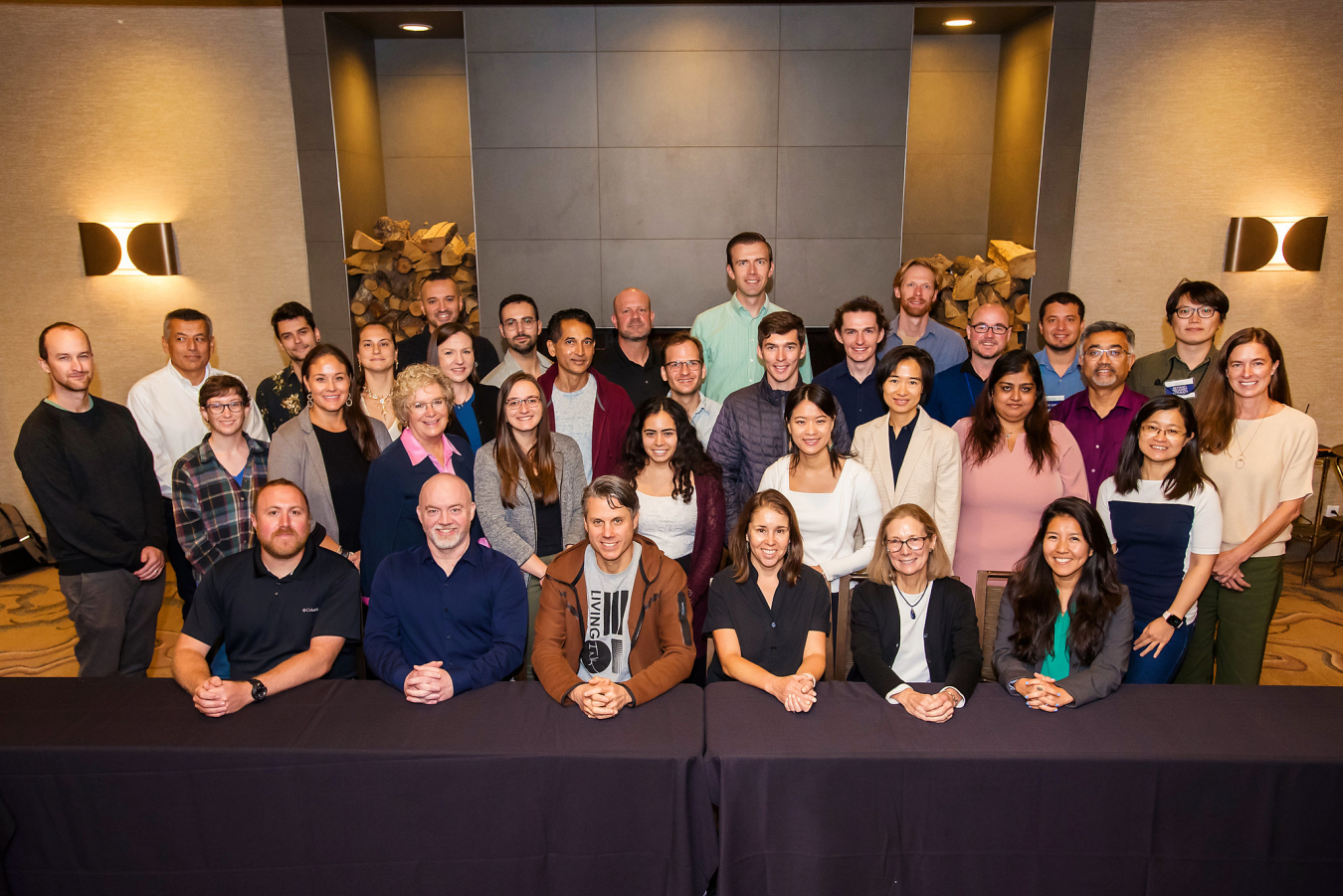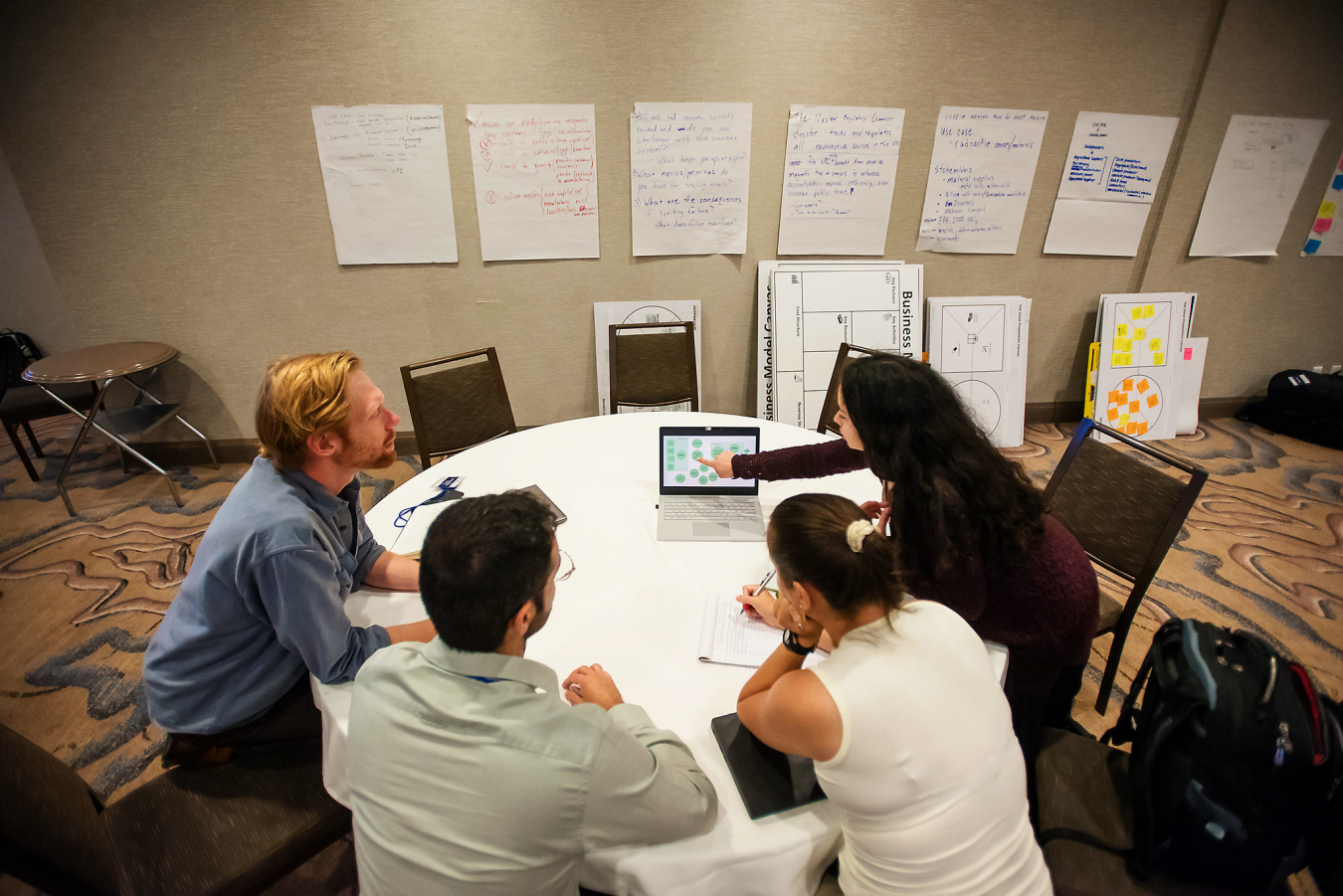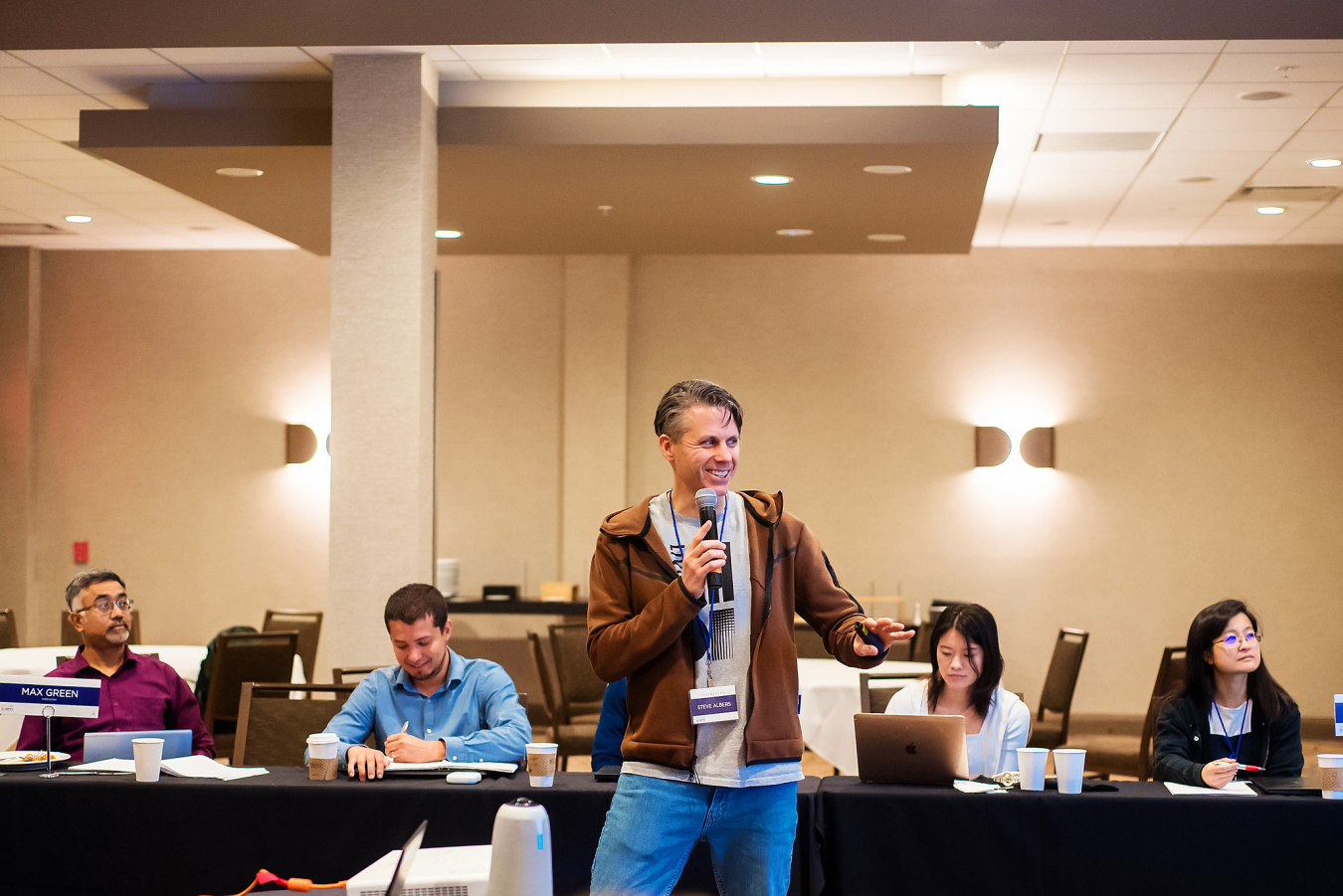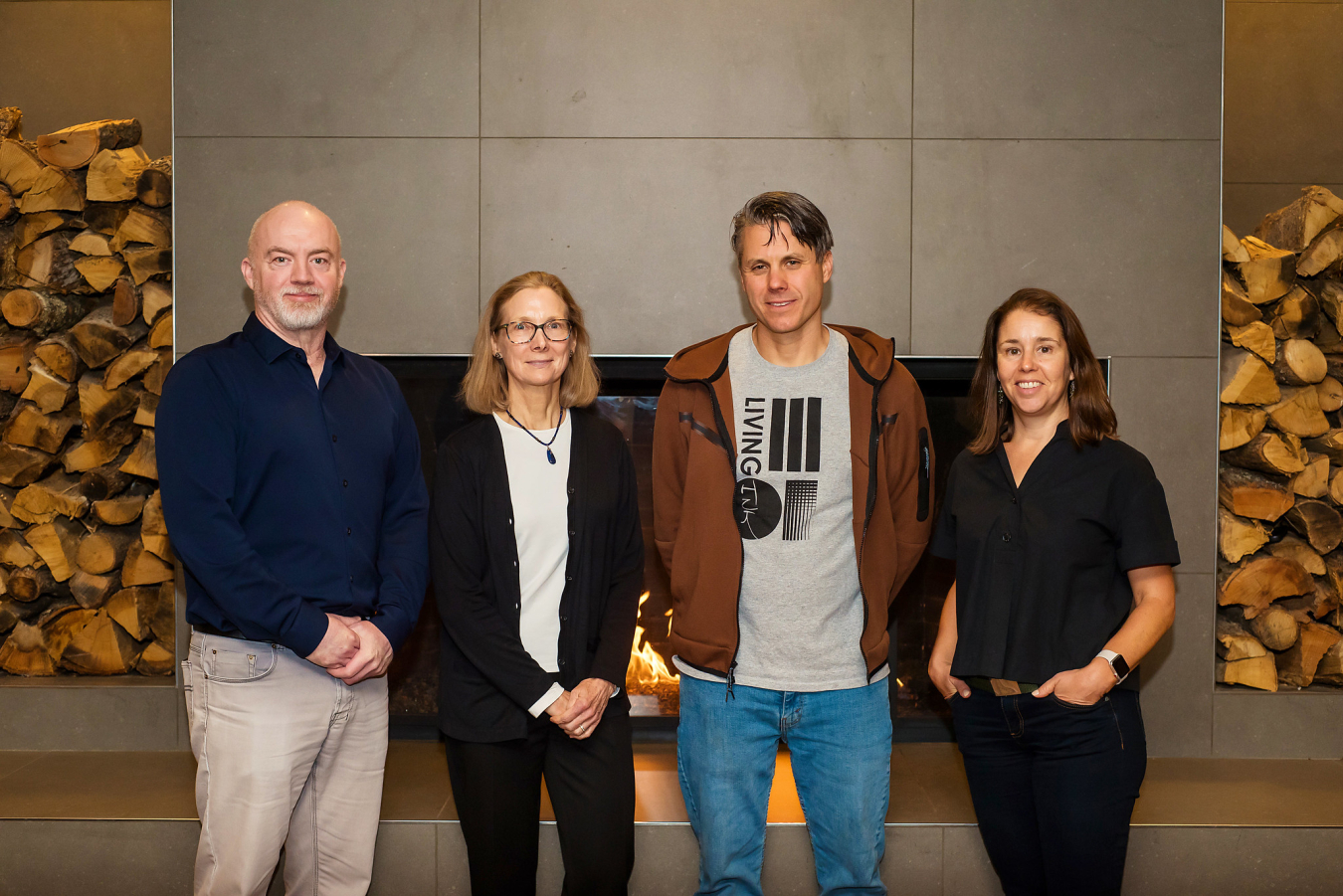Twice a year, researchers from across the country leave their respective labs and convene in Golden, Colorado, and Washington, D.C. for Energy I-Corps. This immersive, two-month training program is a key initiative of OTT.
Office of Technology Transitions
September 21, 2023
Energy I-Corps Cohort 17 kicked off in Golden, Colo. in mid-September 2023. Photo courtesy of Kira Vos
Twice a year, researchers from across the country leave their respective labs and convene in Golden, Colorado, and Washington, D.C. for Energy I-Corps. This immersive, two-month training program is a key initiative of the U.S. Department of Energy’s Office of Technology Transitions and aims to accelerate the path to market for these innovative energy technologies.
During their training, research teams will define value propositions for their technologies, conduct at least 75 stakeholder discovery interviews, and explore viable pathways to bring their products to the market. Each bi-annual cohort includes a wide range of research fields, including hydrogen and fuel cell technologies, bioenergy, wind and water power, and more.

Kickoff week is full of trainings, workshops, and networking to start the two-month immersive program. Photo courtesy of Kira Vos
All 11 teams of cohort 17 and their teaching team gathered for a packed week of trainings, workshops, and networking. From the teaching team, participants learned key commercialization concepts such as value propositions and market sizing.
Guest speakers included Eric Payne, senior licensing executive at the National Renewable Energy Laboratory’s (NREL) Technology Transfer Office, who spoke about intellectual property. He was joined by Tucker Farrell, an NREL researcher in the Concentrated Solar Power group, who shared best practices and lessons learned as an Energy I-Corps alumnus from Cohort 16.

Energy I-Corps instructor Steve Albers, co-founder and CTO of Living Ink Technologies, speaks to the incoming cohort. Photo courtesy of Kira Vos
Teams began the stakeholder interview process, with some already logging more than 10 calls. Teams also took advantage of the in-person opportunity by providing peer-to-peer feedback and getting personalized input from the teaching team during office hours.
Energy I-Corps has driven significant change in the journey toward a clean energy future. To date, the past 16 cohorts of Energy I-Corps have:
- Launched more than 20 new businesses based on their technologies
- Attracted over $150M in post-program funding
- Executed over 75 licenses.

Teams are tasked with conducting at least 75 stakeholder discovery interviews to explore viable pathways to bring their products to market. Photo courtesy of Kira Vos
Meet the Teams
Cohort 17’s opening week in Colorado began on Sept. 11, 2023, and will conclude in mid-November. Ten DOE program offices and partner agencies are funding 11 teams from seven national labs to participate in this iteration of the program. The Energy I-Corps cohort 17 teams are:
MIA from Oak Ridge National Laboratory: This team’s Inference Intelligence (i2) software captures uncertainties introduced by the assumptions of artificial intelligence-machine learning algorithms in digital twins. To gain regulatory acceptance of digital twins in the nuclear industry, scientifically dependable insight is needed into the how, why, and when of these algorithms. That trusted insight is currently missing, which is what this software aims to provide. This project is funded by the Office of Nuclear Energy (NE).
Lignocrete from NREL: Low-carbon concrete is produced by upcycling waste streams from biofuel production pathways. The process reduces the requirement for ordinary portland cement, creates a pathway to new mix designs with 50% less embodied carbon, and improves strength compared to conventional methods. This project is funded by the Office of Fossil Energy and Carbon Management (FECM).
Seadragon from NREL: Seadragon, a kelp-inspired marine energy conversion technology, generates electricity from moving water at a scale that can power a variety of markets and communities, as well as ecological restoration and coastal resilience. It helps prevent erosion and traps sediment and nutrients to build strong ecosystems from the bottom up. This project is funded by the Water Power Technologies Office (WPTO).
Litholution from Idaho National Laboratory: The U.S., currently, relies almost entirely on foreign imports of lithium, creating supply chain vulnerabilities. By combining green chemistry and energy-efficient electrochemical operations, this team’s innovative methodology focuses on lithium separation and recovery from primary sources (e.g., brines) and secondary sources (e.g., spent lithium-ion battery). Through a carbon-negative process, this methodology is an eco-friendly approach towards developing the domestic supply chain of lithium for energy storage materials. This project is funded by the Advanced Materials and Manufacturing Technologies Office (AMMTO)
Gridsense from Sandia National Laboratories (SNL): To ensure grid resiliency and safety, faults in power systems need to be detected and located as quickly as possible. The Gridsense team developed a fault detection and location-capable prototype that significantly reduces the fault characterization time in order of magnitude and can be applied to both microgrids and distribution networks. This project is funded by the Office of Electricity (OE).
Magtag from SNL: Tracking, sensing, and monitoring assets is made easy with the Magtag team’s chip-scale, magnetic smart tagging and sensing platform. The wireless, passive platform is immune to long-range communications interference and tampering. This project is funded by the National Nuclear Security Administration (NNSA).
Hercules from NREL: As renewable energy sources become a larger portion of the electricity grid, the co-location of renewable energy technologies is becoming a reality. The Hercules platform enables the integration of detailed wind farm simulations with other technologies, like solar and storage, to ultimately increase the adoption of hybrid energy systems. This project is funded by the Wind Energy Technologies Office (WETO).
Photosil from Lawrence Livermore National Laboratory: Today’s process of photocuring, the curing of silicones using light, has limitations. State-of-the-art formulations for photocuring silicones either cure in the dark or are limited to specific chemical functionalities that can be detrimental to material properties. The Photosil team’s technology mitigates these problems by providing new possibilities for many applications. This project is funded by NNSA.
SSAM from Pacific Northwest National Laboratory: SSAM, solid-state additive manufacturing, brings a low-cost solution to metal additive manufacturing. It is specifically well-suited for fabrication of near-net shapes using metallic/ceramic materials that are hard to melt or lose their properties when melted. This project is co-funded by AMMTO, Solar Energy Technologies Office (SETO), and NE.
GreenHEART from NREL: To meet the U.S. administration’s goal of net zero greenhouse gas emissions by 2050, tools are needed that allow for rapid and flexible design and analysis of green hydrogen systems. This open-source software tool can help reach that goal by enabling the design of renewable energy systems to be used with industrial end-uses. This project is co-funded by WETO and Hydrogen and Fuel Cell Technologies Office (HFTO).
Retrofit-Ready Decarb from Lawrence Berkeley National Laboratory: This team’s technology provides both space- and water-heating through the combination of a high-efficiency heat pump and a low-cost phase change material thermal energy storage system. It has the potential to reduce annual energy costs by up to 40%. This project is funded by the Building Technologies Office (BTO).
Teaching Team
Leading each cohort is a team of instructors with expertise across industries and strong technical backgrounds. In working with these experienced voices, teams benefit from one-on-one advisory sessions, presentation coaching, team building, and network expansion. The teaching team for cohort 17 includes:
- Steve Albers, Co-Founder and CTO, Living Ink Technologies
- Danielle France, Team Liaison, Innovation and Entrepreneurship Center, NREL
- Max Green, Founder and Managing Member, Ratio Flux
- Rebecca Kauffman, Principal, Sun Raven
- Tom Teynor, CEO, Bell Plumbing and Heating

Energy I-Corps instructors bring expertise across industries and strong technical backgrounds. Photo courtesy of Kira Vos
Like all the cohorts before it, cohort 17 will play a role in driving the world toward a more sustainable future. Energy I-Corps provides a platform for the National Lab community to develop and introduce new research and ensures their innovations can impact the nation and the world. Congratulations to this new cohort of teams!

